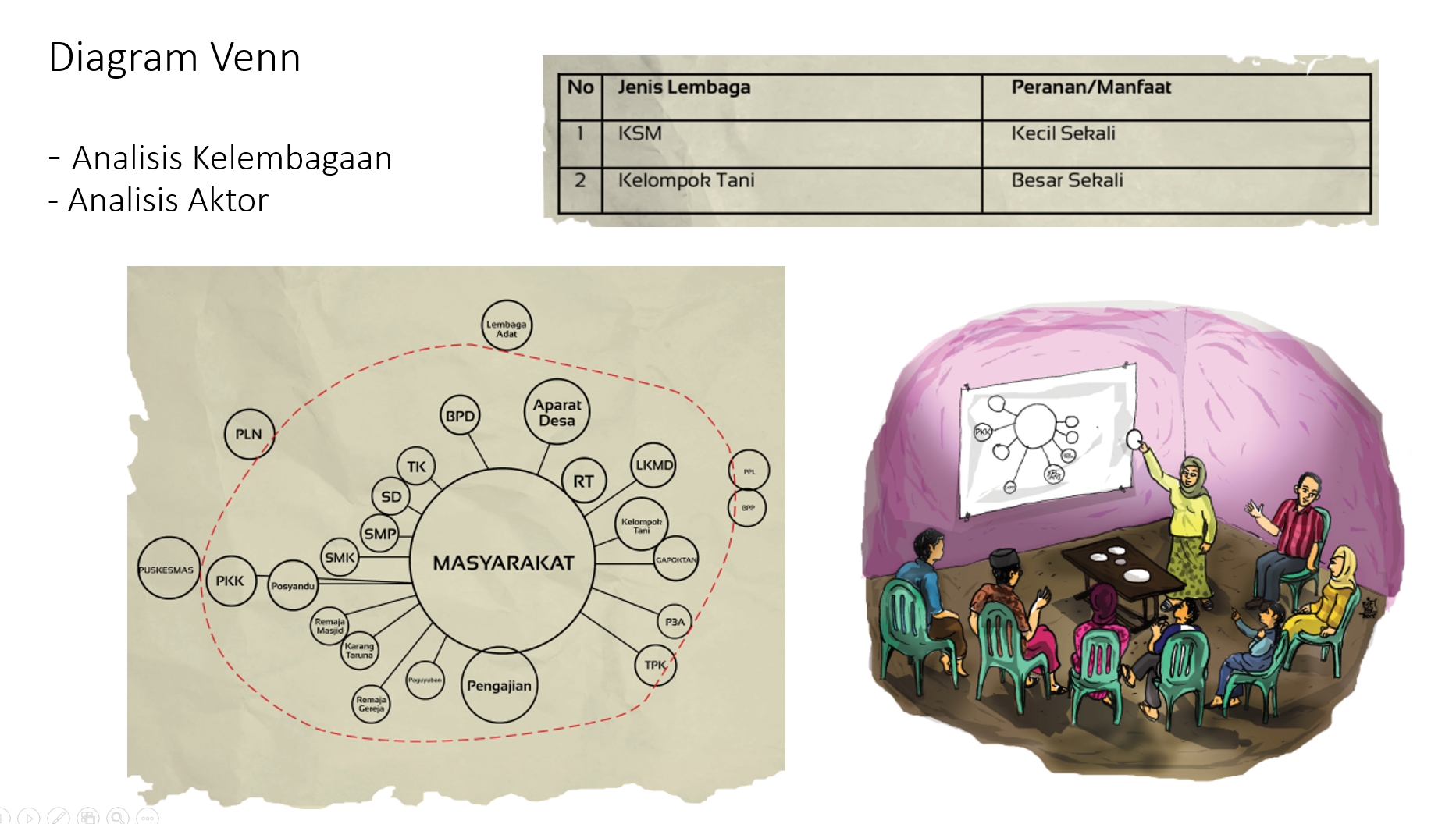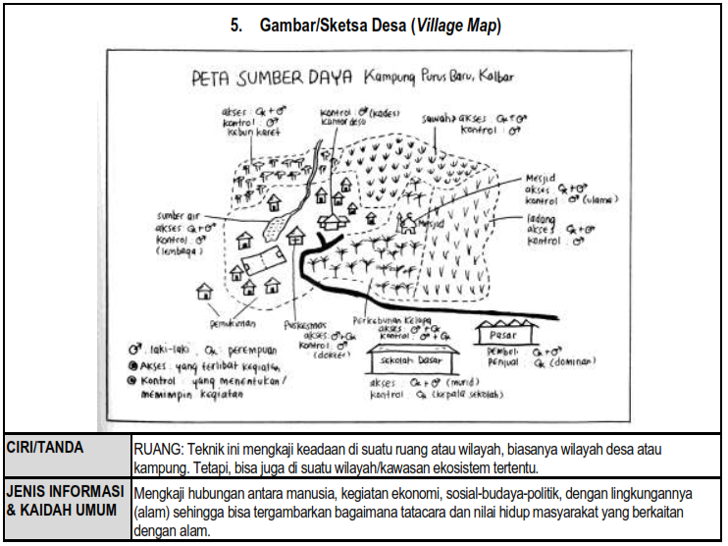Data is the most valuable asset in a village or rural area. From there, we can process it into information that can be used for the community’s struggle tool.
Therefore, in this session, we will try to explore and collect related data:
- Community area, history, how the community utilizes their land, community management model, basic population data.
- Parties who have rights or access to the location, and resources available at that location, or will be affected.
- Forums, mechanisms, and key actors in decision-making within the community.
- Forms of economic activities and potential resources.
- Conflicts and potential conflicts related to land.
- Mapping spatially the land and population of the community’s land.
Material I – Actor Analysis
In the illustration, we see Mother Mijah gathering community figures to analyze actors through a Venn Diagram. Mother Mijah, as a community organizer, questions the condition in her village by asking several questions to the figures.
Mother Mijah asks, among others:
- Who resides inside and around the village?
- Since when have they been living in that location?
- Why do they live in that location?
- How has the residents’ lives developed from the beginning until now?
- What formal institutions exist in that area?
- What informal institutions exist in that area?
- How do each of these institutions influence the residents?
From the diagram, it can be seen: the circles represent influence in the village. The larger the circle, the greater the influence of that actor in Mother Mijah’s village. The lines indicate locations. The farther away, the location is far from the village, or some are even outside the village (beyond the dotted lines).
Task I
Do as Mother Mijah did. Interview several community figures. Create a Venn Diagram in your village. Answer the questions above. Take a photo of the diagram you create.
Material II – Village Sketch



 {{
{{

0 Komentar
Tinggalkan Balasan